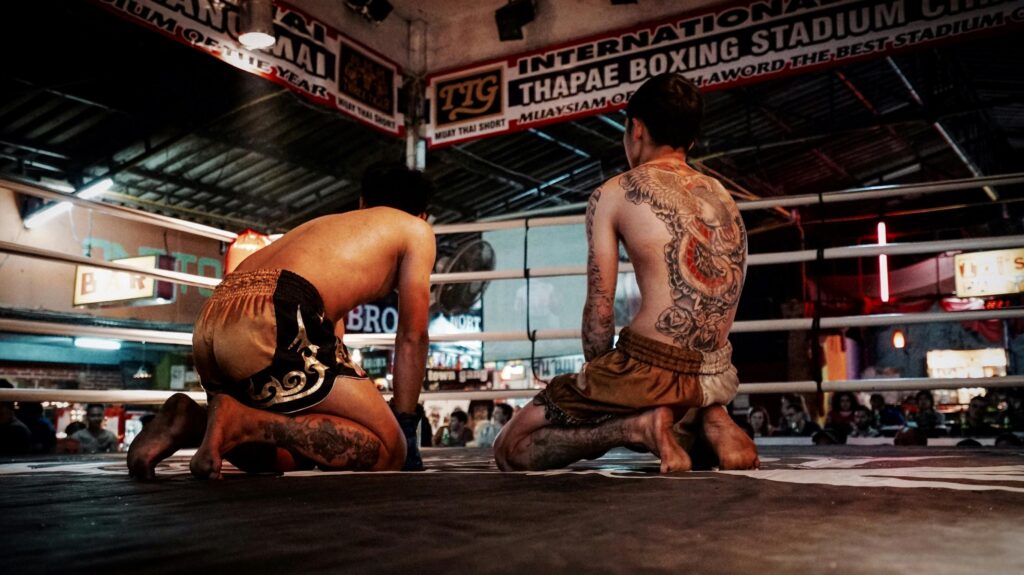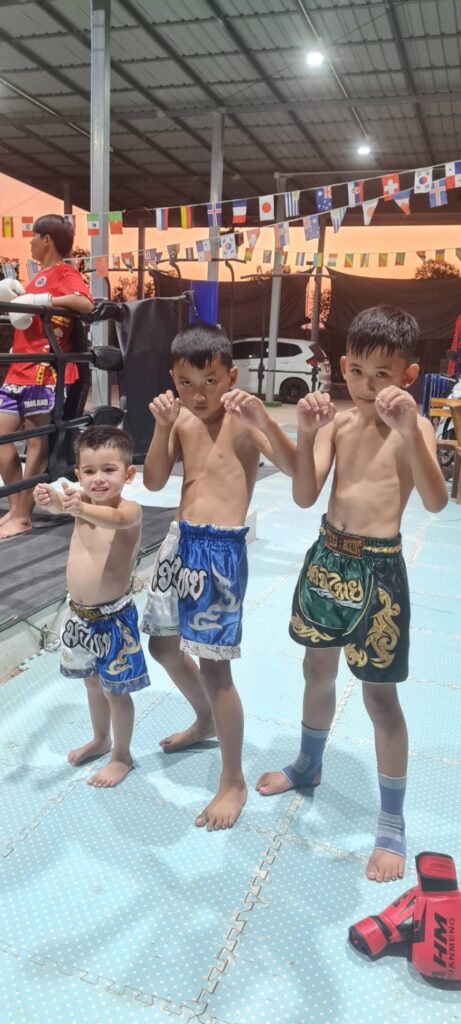✊ Thinking of flying to Thailand to punch stuff, sweat buckets, and live your Ong-Bak fantasy? Great choice. But before you sign up for a camp and get your shins tenderized, read this. It’s not just about flying knees and pad work—there’s a lot they don’t put in the brochures.

🥊 What You’re Actually Signing Up For
Forget the Instagram highlight reel. Real Muay Thai training is:
6 AM runs
400 knees into a bag
Trainers who will lovingly roast your footwork
And a dog named “Tiger” sleeping on your gloves
The good news: It’s one of the most rewarding experiences you can have in Thailand.
The bad news: You might cry a little the first week. (It’s part of the initiation.)
💰 Cost of Training in Thailand (2024–25 guide)
Here’s what you might pay, depending on how “hardcore” or bougie you go:
Item
Price Range (THB)
Daily drop-in
300–500
Weekly pass
1,500–3,000
Monthly training (no room)
6,000–12,000
Monthly w/ accommodation
10,000–25,000
Private sessions
500–1,200
Hidden Costs:
Laundry (you will sweat through everything)
Gloves and gear if not included (2,000–5,000 THB for decent stuff)
Electrolytes, ice packs, and Tiger Balm (you’ll make friends with them fast)
🏕️ Best Types of Muay Thai Camps
1. Hardcore Traditional Camps
Think: fighter dorms, Thai trainers, chicken and rice three times a day.
🥋 Examples: Sitmonchai (Kanchanaburi), Kaewsamrit (Bangkok), Petchyindee (Bangkok)
✅ Great for: Serious fighters, long-term training
❌ Less comfy, English may be limited, no-frills vibe
2. Tourist-Friendly Camps
Muay Thai + good Wi-Fi + smoothie bowls.
🏖 Examples: Khongsittha (Bangkok), Santai (Chiang Mai), Battle Conquer (Phetchabun)
✅ Great for: Fitness tourists, beginners, digital nomads
❌ May lack authentic fight gym atmosphere
3. Island Retreat Gyms
Train hard, beach harder.
🌴 Examples: Tiger Muay Thai (Phuket), Phuket Top Team, Diamond Muay Thai (Koh Phangan)
✅ Great for: Newbies, hybrids (MMA, BJJ, Muay Thai)
❌ Can get expensive, sometimes “party vibes” creep in
4. Hidden Gem Local Gyms (Especially in Isaan)
Low prices. High authenticity. You might be the only foreigner.
🐓 Example: Any gym in Ubon Ratchathani, Khon Kaen (I once stumbled upon Kaoklai’s gym in the midle of nowhere in Khon Kaen, he was a great teacher and very humble. He’s living in Singapore now with his own gym, Kaoklai Studio), or Nakhon Ratchasima
✅ Great for: Cultural immersion, private attention, affordability
❌ Less structure, sometimes unpredictable
🤫 What No One Tells You About Training in Thailand
You’ll be sore in muscles you didn’t know existed.
You might spar a 12-year-old who destroys you. (He’s been training since 5.)
Trainers will smile, then sweep you. Repeatedly.
Rest days are sacred. Don’t skip them unless you want to cry into your pad thai.
Thai trainers have PhDs in sarcasm. It’s all part of the love.
🧘♂️ What to Pack (That Most Blogs Forget)
Your own hand wraps (trust me)
Flip-flops you can wear in the shower
Magnesium spray for muscle recovery
A second towel (the first one will die in Week 1)
Earplugs for gym dogs snoring
Cash for coconut water and post-training grilled chicken (งบน้อย, but worth it)
🎁 Freebie: Download My “Muay Thai Camp Prep Checklist”
Wanna train without forgetting essentials like electrolyte powder, Vaseline, or your dignity?
Download the free checklist – Everything you actually need, nothing you don’t. PDF includes budget planner, gear checklist, recovery hacks, and polite Thai phrases like “Please don’t knock me out.”
💡 Final Thoughts
Training Muay Thai in Thailand is more than just punching and sweating—it’s a full-blown cultural, physical, and personal growth experience. Whether you’re here to fight, get fit, or find yourself in a sweaty gym full of legends, you’ll leave stronger than you came.
Just don’t forget to bow, do NOT try knocking one of the trainers out, and hydrate.



Swerte99casino, anyone? Heard some buzz about it. Interface is alright, nothing too fancy, but it gets the job done. Give it a shot and see what you think! More info here: swerte99casino
Paldopanalo is the real deal! Got to cash out pretty quick when I won. Always important! Definitely consider it when you’re looking for a good spot. paldopanalo
Dice games are surprisingly mathematical! Seeing platforms like Jili56 embrace data-driven insights is cool – quick verification & fast play sound ideal. Check out the jili56 link for a streamlined experience! It’s neat how they focus on quick learners.